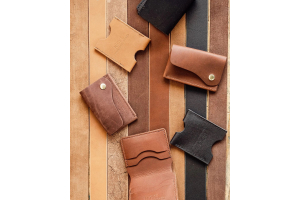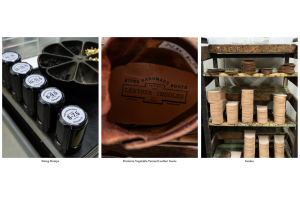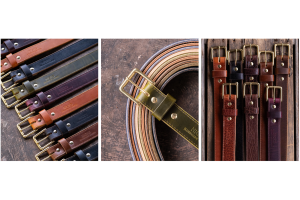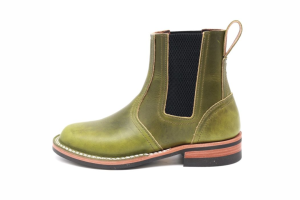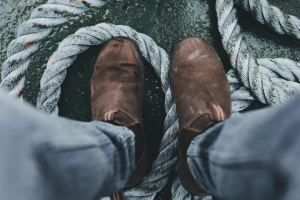Are Leather Jackets Warm? Benefits For Cold Weather

Key Takeaways:
- Leather Jackets Provide Natural Warmth: Leather’s dense fibers insulate and block wind, making jackets a great option for moderate winter conditions. Adding layers boosts warmth in colder climates.
- Linings Enhance Insulation: Quality linings like wool or shearling increase a leather jacket's warmth. Look for features like high collars and snug fits for better protection.
- Care Ensures Longevity and Warmth: Proper maintenance, including regular cleaning and conditioning, keeps your jacket warm and durable for years. Always store it properly during the off-season.
Have you ever stepped outside on a frosty morning, wondering if your jacket is enough to shield you from the biting cold?
The search for the perfect cold-weather companion often leads to one timeless choice: the leather jacket. Known for their rugged charm and durability, leather jackets have been trusted for decades to combine functionality with style. But are they genuinely warm enough for harsh winters?
At Nicks Boots, we’ve spent years crafting premium products that endure the elements. With the same dedication we bring to our legendary boots, we appreciate the value of high-quality outerwear, like leather jackets, built for lasting comfort and performance.
In this piece, we’ll explore the warmth of leather jackets and why they’re a smart investment for cold weather, from their natural insulating properties to tips on maximizing their performance in winter conditions.
How Leather Acts As A Natural Insulator
Leather isn’t just about style; it’s a powerhouse of natural insulation. The dense leather fibers create a barrier that traps warmth while shielding you from cold winds. Full-grain leather jackets are an excellent choice for chilly weather, especially when compared to synthetic materials that can struggle to maintain consistent warmth.
Unlike fabric-based outerwear, leather is inherently wind-resistant. This quality ensures that cold air doesn’t penetrate the material, keeping your body heat intact. Paired with a soft inner lining, such as wool or shearling, a leather jacket becomes an even more effective shield against the cold, offering comfort and functionality.
Moreover, leather’s breathability allows moisture to escape, preventing the clammy feeling often associated with less breathable materials. This balance of warmth and breathability makes leather jackets reliable for various cold-weather conditions.
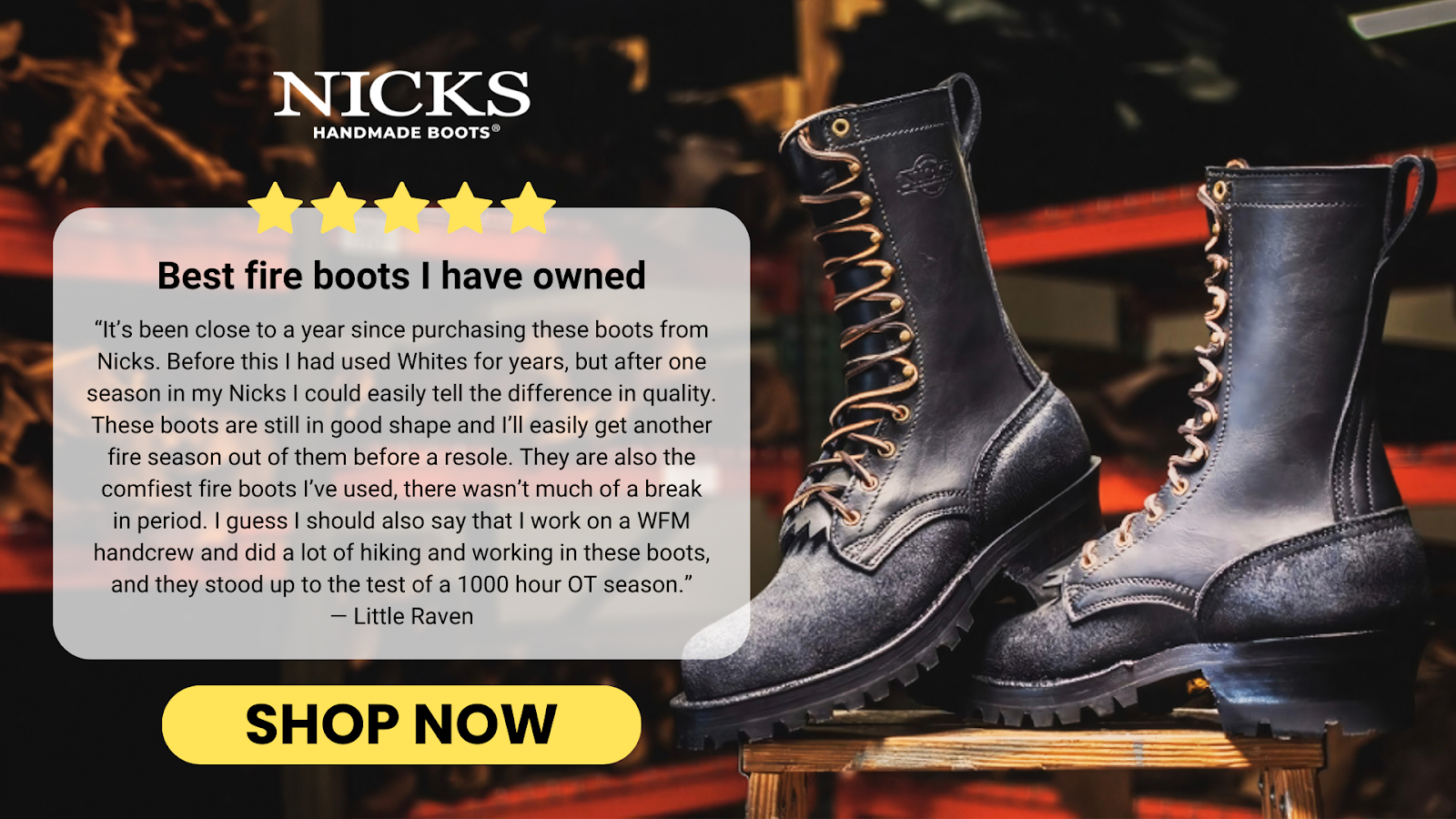

Benefits Of Leather Jackets For Cold Weather
When winter bites, a leather jacket can become your most reliable companion. Its unique blend of durability, protection, and timeless appeal ensures you stay warm and stylish in cold conditions. Let’s break down the key benefits and see why leather jackets excel in winter:
Durability For Harsh Conditions
Leather jackets are built to last, thanks to the material’s natural toughness. Unlike synthetic options, leather resists scratches, scuffs, and general wear, ensuring it remains in excellent condition even after frequent use. This durability makes a leather jacket a long-term investment, perfect for braving harsh winters year after year.
Wind And Water Resistance
The dense fibers in leather create a barrier against the wind, keeping you shielded from icy gusts. While not fully waterproof, most leather jackets offer water resistance, making them effective in light rain or snow. This combination ensures you stay dry and warm when braving unpredictable winter weather.
Warmth Without Bulk
One of the standout features of leather jackets is their ability to provide warmth without the weight. Unlike puffy winter coats, leather jackets maintain a sleek and lightweight profile while offering excellent insulation. This allows for greater mobility and comfort, whether commuting or enjoying outdoor activities.
Timeless Versatility
A leather jacket transcends trends, making it a staple in any wardrobe. It seamlessly transitions between casual and formal settings, ensuring you look polished no matter the occasion. Its blend of style and practicality makes it a go-to piece for cold-weather fashion.
Factors That Affect The Warmth Of A Leather Jacket
Not all leather jackets are created equal when it comes to warmth. The material type, lining, and overall construction are crucial in determining how well a leather jacket performs in cold weather. Here’s a closer look at the factors that make a leather jacket more or less effective in keeping you warm:
Type Of Leather Used
The type of leather is a significant factor in warmth. For example, jackets like the Patriot Type 3 Jacket use Seidel 1964 roughout leather, known for its dense and durable properties, which provide excellent wind resistance and insulation. Thicker and higher-grade leathers offer better protection against the elements, making them ideal for colder climates.
Presence And Quality Of Lining
The lining of a leather jacket can enhance its insulation properties. Jackets such as the Patriot Type 1 Jacket, with its 26oz U.S. wool lining, provide warmth by trapping heat close to the body. A quality lining, whether wool, shearling, or quilted fabric, can transform a leather jacket into a winter-ready piece.
Fit And Coverage
The fit and coverage of a jacket influence how effectively it retains warmth. Designs with a snug fit, like the Ranchman Jacket, prevent cold air from seeping in while offering ample room for layering. Features such as high collars or cinched waists add an extra layer of protection against chilly drafts.
Construction And Craftsmanship
Attention to detail in construction significantly impacts a jacket's performance. U.S.-made jackets exemplify high-quality craftsmanship, ensuring durability and excellent heat retention. Features like solid brass hardware and a fully U.S.-based production process enhance functionality and style, making these jackets reliable in extreme weather conditions.
Choosing The Right Leather Jacket For Maximum Warmth
Selecting the right leather jacket for cold weather is crucial to staying comfortable and stylish. A well-chosen jacket keeps you warm and complements your lifestyle and needs. Here’s how to identify the best leather jacket for maximum warmth:
- Material Matters: Opt for jackets made from high-quality leather, such as roughout or full-grain leather. For instance, the Patriot Type 3 Jacket features Seidel 1964 leather, which is exceptionally durable and provides natural insulation against cold weather. These types of leather are thicker and denser, offering better protection from harsh conditions compared to thinner, more fashion-oriented options.
- Prioritize Insulated Linings: Look for jackets with warm, insulated linings for added comfort. The Patriot Type 1 Jacket, with its 26oz U.S. wool lining, is a perfect example of how a good lining can significantly boost a jacket’s cold-weather performance. Linings like wool, shearling, or quilted fabrics trap heat effectively, making them essential for colder climates.
- Functional Design Features: Choose designs that enhance warmth and usability. Jackets with high collars, adjustable cuffs, and snug fit, like the Ranchman Jacket, help keep out cold drafts while providing room for layering. Additional features like side-entry pockets and internal wallet pockets add practicality without compromising warmth.
- Versatility for Different Climates: Consider how versatile the jacket is across varying cold conditions. Jackets designed for three-season use, like the Ranchman Jacket, provide flexibility for layering in extreme cold or wearing alone in milder weather. This adaptability ensures you get the most out of your investment.
Layering Tips: Enhancing Warmth With Leather Jackets
Even the warmest leather jackets can benefit from strategic layering during extreme cold. Layering boosts insulation and provides flexibility to adapt to varying temperatures throughout the day. Here’s how to layer effectively for maximum warmth:
Start With A Base Layer
A good base layer is essential for trapping body heat. Thermal tops or merino wool shirts are excellent options as they wick moisture away from the skin while providing insulation. This creates a comfortable foundation under your leather jacket without adding unnecessary bulk.
Add A Mid-Layer For Insulation
For colder conditions, incorporate a mid-layer such as a fleece, lightweight down jacket, or wool sweater. This layer enhances warmth by creating an additional barrier against the cold. For example, the Patriot Type 1 Jacket has ample room to accommodate mid-layers while maintaining a streamlined look.
Finish With Accessories
Don’t overlook cold-weather accessories that complement your leather jacket. Scarves, gloves, and beanies keep extremities warm and prevent heat loss around exposed areas like the neck. Pairing these with a well-fitted leather jacket, like the Ranchman Jacket, ensures comprehensive protection against the elements.
Care Tips To Maintain Warmth And Longevity
A leather jacket is an investment that can last decades, but proper care is essential to maintain its warmth and durability. Regular maintenance ensures the jacket remains resilient against the elements and looks as good as new. Here are some tips to help you preserve your leather jacket:
- Clean Regularly And Gently: Dirt and debris can weaken the leather over time, so cleaning your jacket is essential. Use a damp cloth or a leather-specific cleaner to wipe away dirt, focusing on heavily used areas like the sleeves and pockets. Avoid harsh chemicals, as they can strip the leather of its natural oils, reducing its insulating properties.
- Condition To Retain Flexibility: Leather can dry out and become stiff, compromising its ability to keep you warm. Use a leather conditioner periodically to restore moisture and maintain its flexibility. This treatment also adds a protective barrier, enhancing its resistance to wind and light water exposure.
- Store Properly During Off-Seasons: When not in use, store your leather jacket in a cool, dry place away from direct sunlight to prevent fading or cracking. Hang it on a sturdy hanger to maintain its shape, and avoid plastic covers that can trap moisture. Proper storage ensures your jacket is ready to provide optimal warmth year after year.
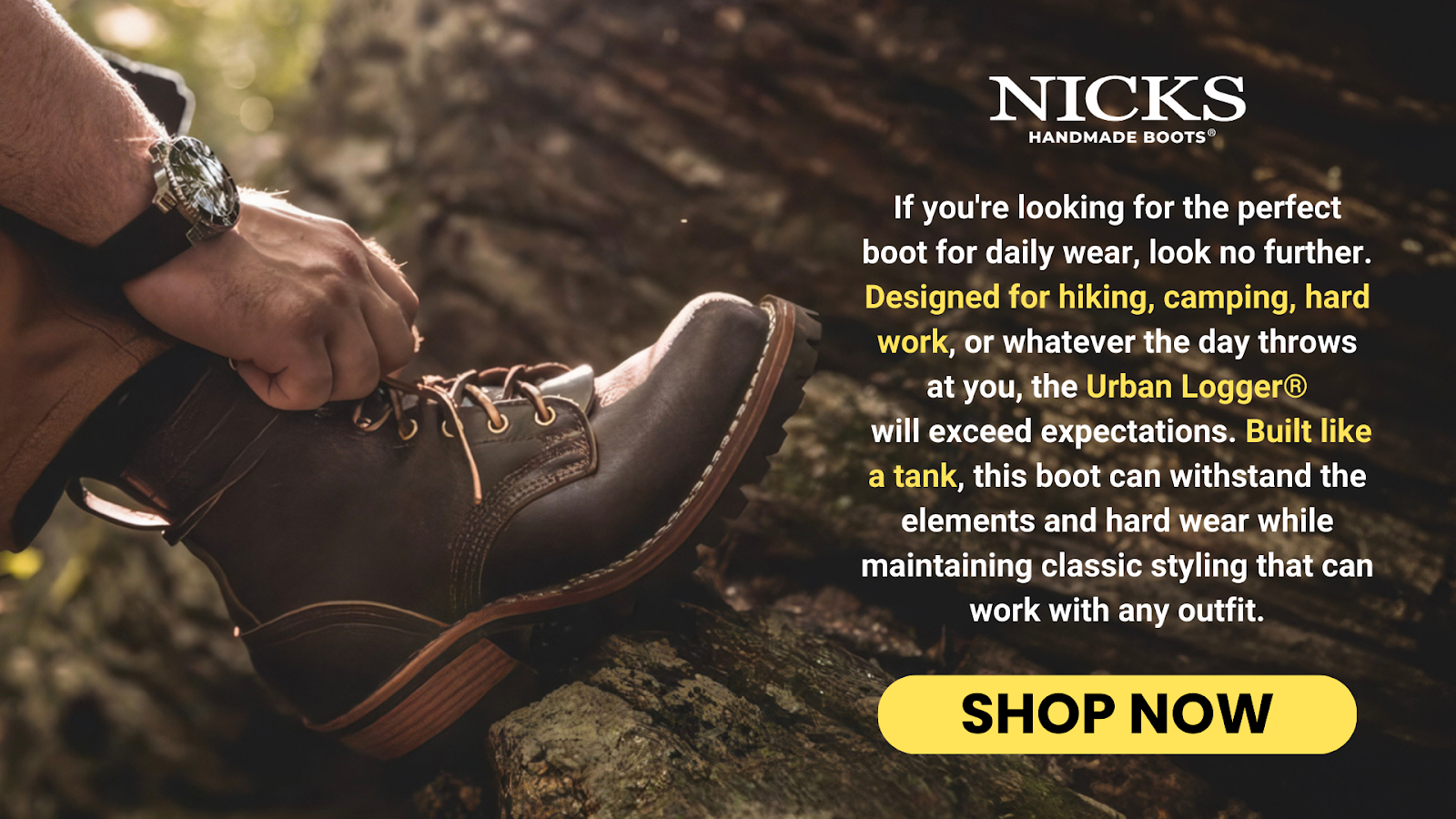

Final Thoughts
Leather jackets embody the perfect blend of style, functionality, and resilience, making them more than just a wardrobe essential—they are a true investment in comfort and versatility. Beyond their iconic aesthetic, these jackets offer reliable warmth and protection against the elements, proving their value in both fashion and practicality. Whether crafted with dense, high-quality leather or paired with luxurious linings like wool or shearling, leather jackets are designed to perform in cold weather while maintaining a sleek, timeless appeal.
As you consider the best options for winter wear, remember that a leather jacket is not just a purchase but a long-term companion for various seasons and occasions. With proper care and thoughtful layering, it becomes a symbol of enduring style and functionality. For anyone seeking a balance between warmth, durability, and classic design, a leather jacket remains an unmatched choice in cold-weather apparel.
Read also:
Frequently Asked Questions About Are Leather Jackets Warm
Are leather jackets suitable for all winter conditions?
Leather jackets are great for moderate winter weather as they naturally insulate and block wind. For extremely cold conditions, adding layers like a thermal base and fleece mid-layer can enhance their effectiveness.
Do leather jackets work well in snowy weather?
Leather jackets provide decent water resistance, making them suitable for light snow. However, they aren’t fully waterproof, so in heavy snow, an additional waterproof outer layer is recommended to stay dry.
What makes leather jackets better than synthetic materials for warmth?
Leather’s dense, natural fibers create a barrier against wind while retaining body heat, offering superior insulation. Synthetic materials often lack this natural balance of breathability, durability, and insulation.
Are there leather jackets specifically designed for colder climates?
Yes, certain leather jackets, such as those with shearling or wool linings, are tailored for colder conditions. These designs maximize insulation while keeping the wearer comfortable and stylish.
How long can a leather jacket last with proper care?
A leather jacket can last for decades with regular cleaning, conditioning, and proper storage. This longevity makes it a worthwhile investment for both warmth and style.
Do all types of leather jackets provide the same level of warmth?
Not all leather jackets are equally warm; those made from thicker leather, such as roughout or full-grain leather, offer better protection. Insulated linings also significantly affect a jacket’s warmth.
Are leather jackets breathable despite being warm?
Yes, leather is naturally breathable, which helps regulate body temperature by allowing moisture to escape. This feature keeps you comfortable without sacrificing warmth, even during extended wear.
Can leather jackets replace winter coats?
Leather jackets can replace winter coats in milder conditions, especially with proper layers. In extreme cold, they are best used as a part of a layered outfit for added insulation.
What should I look for when buying a leather jacket for winter?
Look for jackets made from high-quality leather with insulated linings like wool or shearling. Functional features such as high collars, adjustable cuffs, and a snug fit enhance their effectiveness in winter.
Do leather jackets require special cleaning methods after winter use?
Leather jackets should be cleaned using a soft, damp cloth or a leather-specific cleaner to remove dirt and salt stains. Conditioning the leather after cleaning helps maintain flexibility and ensures it remains warm and durable for the next season.
